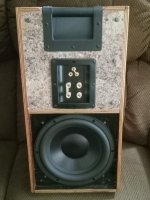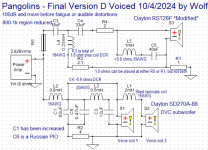I just completed the audio portion of this build, and am quite happy with them. It uses a pair of Dayton Audio RST28F B-stock tweeters that have been modified slightly, and a pair of Dayton Audio SD270A-88 DVC subwoofers. The box is 25 ltrs loaded with an RSS265PR tuned to 32Hz. Since one of my PRs is a production sample and one was off the shelf, I don't know whether that is one or 2 weight slugs per PR. Measure the woofer impedance in box for best results. The box has offset panels in front and rear to keep the PR recessed and safe, and make the baffle area for the drivers at 1.5" with a removable baffle. The cabinet drawing assumes making the front 1.5" thick and no offset baffle or rear, but it is easy to make the adjustments should you so choose. The cabinets are fairly utilitarian looking at the moment with an unfinished MDF baffle and Butter-rum Formica inside a half inch birch plywood perimeter.
The name is derived from the bass response curve looking like the spine of a bipedal foraging Pangolin looking for insects or grubs, and that it and 10" 2ways are both kind of going extinct. I took visual inspiration from the DeVore Fidelity Orangutan 0/93 mainly, but the Dynaco and Advent large woofer designs of old are not too far from the direction.
The sensitivity is 88-89dB range, and definitely a 4 ohm nominal system. It utilizes the second coil on the woofer as a 0.5way for BSC. Xover is set to 1470Hz, and utilizes low Q filters and a leaned in tweeter response to minimize directivity shifts, approximating an LR4 set of slopes. It is a surprisingly dynamic sounding pair of speakers, and HD is low save for a rise in 3rd order at about 700Hz. The woofer breakup and tweeter Fs are both heavily suppressed, which notch the related drivers just outside the xover and steepens the slope slightly.
About the tweeter, and what I did to it...
The initial RST28F B-Stock tweeters measured like garbage. I was able to remove the rear chamber cap, remove the foam plug in the vented pole piece, and then replace with a better cup and a 1" cotton ball respectively. I twisted the ball into place until it was flush to the back of the back plate. I also swapped out the stock chamber-damping with Ultratouch denim, placing a layer of wool batting between the denim and the backplate. The swapped damping is thick enough to need compressed while gluing on the new back cup. I used masking tape and the included packaged protection plastic to hold the cup in place while the E6000 adhesive solidified. The spec Fs is 710, and mine spec to 800 or just north of there, so the size of the chamber was not altered much. Just use a suitable cap to fit over the backplate and glue to the backplate/magnet junction. 3" PVC cap was just too small to fit over it, but a little sanding could make it work. I used some screw-on plastic caps for glass Ball Mason style herb jars, which are honestly just a little too big but worked well. Even if you don't modify the stock tweeter, I feel it will work well in this design. The Fs suppression should still work if the Fs is between 700 and 850 Hz.
Some tweeter notes;
Thanks for looking!
The name is derived from the bass response curve looking like the spine of a bipedal foraging Pangolin looking for insects or grubs, and that it and 10" 2ways are both kind of going extinct. I took visual inspiration from the DeVore Fidelity Orangutan 0/93 mainly, but the Dynaco and Advent large woofer designs of old are not too far from the direction.
The sensitivity is 88-89dB range, and definitely a 4 ohm nominal system. It utilizes the second coil on the woofer as a 0.5way for BSC. Xover is set to 1470Hz, and utilizes low Q filters and a leaned in tweeter response to minimize directivity shifts, approximating an LR4 set of slopes. It is a surprisingly dynamic sounding pair of speakers, and HD is low save for a rise in 3rd order at about 700Hz. The woofer breakup and tweeter Fs are both heavily suppressed, which notch the related drivers just outside the xover and steepens the slope slightly.
About the tweeter, and what I did to it...
The initial RST28F B-Stock tweeters measured like garbage. I was able to remove the rear chamber cap, remove the foam plug in the vented pole piece, and then replace with a better cup and a 1" cotton ball respectively. I twisted the ball into place until it was flush to the back of the back plate. I also swapped out the stock chamber-damping with Ultratouch denim, placing a layer of wool batting between the denim and the backplate. The swapped damping is thick enough to need compressed while gluing on the new back cup. I used masking tape and the included packaged protection plastic to hold the cup in place while the E6000 adhesive solidified. The spec Fs is 710, and mine spec to 800 or just north of there, so the size of the chamber was not altered much. Just use a suitable cap to fit over the backplate and glue to the backplate/magnet junction. 3" PVC cap was just too small to fit over it, but a little sanding could make it work. I used some screw-on plastic caps for glass Ball Mason style herb jars, which are honestly just a little too big but worked well. Even if you don't modify the stock tweeter, I feel it will work well in this design. The Fs suppression should still work if the Fs is between 700 and 850 Hz.
Some tweeter notes;
- I feel the foam plug being changed to cotton ball is the BEST THING you can do to the RST. 9 times out of 10, I feel it is somewhat congested sounding and this is likely due to the foam pole plug.
- The cup as I removed it was not salvageable. It is very thin plastic. If you can carefully remove it, you won't need to replace it. Good luck.
- The plug can be reached by faceplate removal, but then the wool pole-cap also has to be removed to get to it. IME, I've seen different pole caps. One is more cylindrical and one is a formed-dome shape. Shaping the cylindrical wool cap like a dome carefully with a pair of scissors ensures no contact with the output dome under operation. If doing this, be careful and don't slice the sealing ring against the front plate to keep the faceplate sealed against the front plate when reinstalled. That said, the Wool Pole-cap might fray and separate if removed, so it is easier from an integrity standpoint to remove the pole plug from the rear.
- I also applied a heavy shredded-tire/sport-flooring rubber piece to the rear of the new chamber cap to deaden any resonance under operation. I have done this several times in various cases, and it always helps a little.
- see tweeter graphic for a better understanding.
Thanks for looking!
Attachments
-
 PangolinsFinalC0deg.png47.9 KB · Views: 322
PangolinsFinalC0deg.png47.9 KB · Views: 322 -
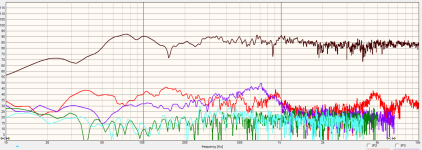 PangolinsFinalC0degHD.png80.7 KB · Views: 219
PangolinsFinalC0degHD.png80.7 KB · Views: 219 -
 PangolinsFinalCOffAxes0-60.png93.4 KB · Views: 214
PangolinsFinalCOffAxes0-60.png93.4 KB · Views: 214 -
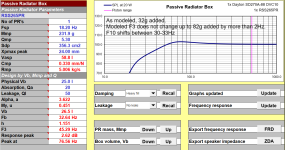 PangolinBox.png54 KB · Views: 264
PangolinBox.png54 KB · Views: 264 -
 PangolinsBoxDrawing.png39 KB · Views: 262
PangolinsBoxDrawing.png39 KB · Views: 262 -
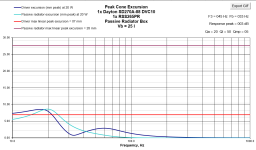 PangolinXmax.png20 KB · Views: 266
PangolinXmax.png20 KB · Views: 266 -
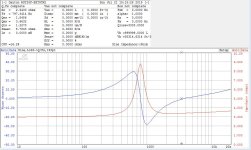 Dayton RST28F-4_2Mod.jpg82.8 KB · Views: 160
Dayton RST28F-4_2Mod.jpg82.8 KB · Views: 160 -
 Dayton RST28F-4_1Mod.jpg79.6 KB · Views: 191
Dayton RST28F-4_1Mod.jpg79.6 KB · Views: 191 -
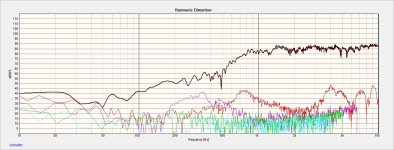 Mod1HD.jpg169.1 KB · Views: 167
Mod1HD.jpg169.1 KB · Views: 167 -
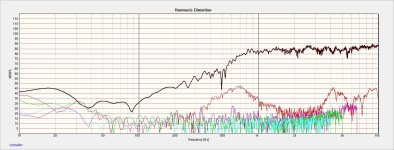 Mod2HD.jpg166.5 KB · Views: 196
Mod2HD.jpg166.5 KB · Views: 196 -
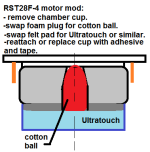 RSTcup.png5.3 KB · Views: 193
RSTcup.png5.3 KB · Views: 193 -
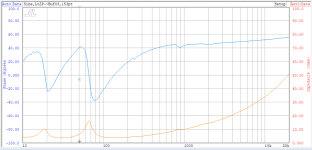 2ndtuningdiscCab1withCoil.png29.9 KB · Views: 197
2ndtuningdiscCab1withCoil.png29.9 KB · Views: 197 -
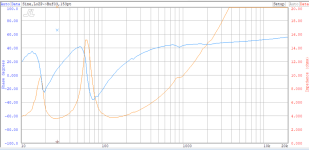 2ndtuningdiscCab2withCoil.png31 KB · Views: 153
2ndtuningdiscCab2withCoil.png31 KB · Views: 153 -
 Pangolin_2pt5-2pt0_8pt2-52ohm-0.7-notch_OnTweeterAxis_halfmeter.png48.1 KB · Views: 154
Pangolin_2pt5-2pt0_8pt2-52ohm-0.7-notch_OnTweeterAxis_halfmeter.png48.1 KB · Views: 154 -
 PangolinCab1-RST28FMod-OnAxis.png53.9 KB · Views: 146
PangolinCab1-RST28FMod-OnAxis.png53.9 KB · Views: 146 -
 PangolinCab1-SD270A88-OnTweeterAxis.png53.8 KB · Views: 149
PangolinCab1-SD270A88-OnTweeterAxis.png53.8 KB · Views: 149 -
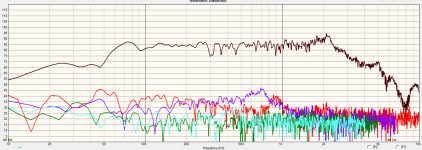 PangolinCab1-SD270A88-OnTweeterAxisHD.png84 KB · Views: 158
PangolinCab1-SD270A88-OnTweeterAxisHD.png84 KB · Views: 158 -
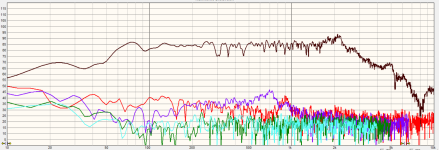 PangolinCab2-SD270A88-OnTweeterAxisHD.png80.7 KB · Views: 376
PangolinCab2-SD270A88-OnTweeterAxisHD.png80.7 KB · Views: 376 -
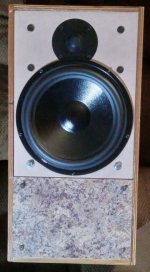 fgb0td6ca5sd.jpg272.9 KB · Views: 384
fgb0td6ca5sd.jpg272.9 KB · Views: 384 -
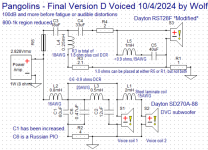 Pangolins_D_AbsolutelyFinalXover.png141.9 KB · Views: 218
Pangolins_D_AbsolutelyFinalXover.png141.9 KB · Views: 218
I wound 6 of the coils myself. That is 3 out of 5 per xover. The 2.0mH is not pictured and mounted separately and off board, leaving 4 coils on each board. Boards are 4"x7" in size.
Sandcast resistors, and all Dayton capacitors because I had them.
Sandcast resistors, and all Dayton capacitors because I had them.
Attachments
I fully agree!Your builds are always interesting
And it is not a very common design choice - it doesn't even have a waveguide!
What was your intention for this speaker?
Falling lower end for near wall placement?
Wolf, it took me awhile to figure out you are using dual voice coils for your 0.5 woofer. I was looking for the "other" woofer. I didn't know you could do that.
Fascinating, and now you having me thinking about some cheap DVC woofers I have. I would love to hear yours play.
R
Fascinating, and now you having me thinking about some cheap DVC woofers I have. I would love to hear yours play.
R
They'll be in Detroit at CSS event this weekend, if you are close.
It's not really a terribly falling low end when the F10 is 30 and F3 is 45. I was shooting for good in room response about 2' from a front wall. They mimic the low end of alot of older speakers of those days, and still do quite well.
It's not really a terribly falling low end when the F10 is 30 and F3 is 45. I was shooting for good in room response about 2' from a front wall. They mimic the low end of alot of older speakers of those days, and still do quite well.
And a compression driver with a horn ?I don't like the sound of waveguides in most cases, and will slope to avoid it if I can. Some sound like "beebees dropped in a metal bowl", as someone else said it.
Unfortunately not close to Detroit, but if you bring to Burning Amp I'll buy you a beer ! F3 of 45 seems pretty decent, I would of expected lower sensitivity by dividing voice coil in this set up.
Waveguide (PRV) with 2" driver (Alpha 2-8) sounds pretty good but is about 17" (44 cm) wide, not very compact.
R
Waveguide (PRV) with 2" driver (Alpha 2-8) sounds pretty good but is about 17" (44 cm) wide, not very compact.
R
I've been told it has to do with the entrance throat geometry to the waveguide and it being reflective. A waveguide while similar to a compression horn does not quite operate the same way. I've heard a good many CDs honk or peak in the lower registers, but xover fixing was successful and the rise is usually why we use them as such. Since the issue I'm hearing is upper register, I'm more prone to just avoid them.
I'm also not really happy with the "make the tweeter a midrange dome" movement, trying to get them to operate waaaaaayyyy too low. Midrange presence just dies and the powerful woofers usually paired do not have the agility to meet the higher spec. They just sound like something is missing.
I'm also not really happy with the "make the tweeter a midrange dome" movement, trying to get them to operate waaaaaayyyy too low. Midrange presence just dies and the powerful woofers usually paired do not have the agility to meet the higher spec. They just sound like something is missing.
I made a "similar" design with a CD horm (SICA 8H2CP + BMS4544 RCF HF94, 1300Hz LR4, 30L SB20 PR), never be published, and I'm very satisfied, it works as good as very other more expensive design. The problem in my opinion is the time alignment of the woofer with the tweeter. In my design the compression has a delay on the woofer and I made a perfect match with the woofer, in a passive crossover.
Perhaps If you go to active you should suppress all issue, you can align acoustics center.

Edit : Other alternative a mid tweeter like a Fostex FF85WK orMark Audio ALPAIR 5.3. They sound good.
Note I like your design 🙂
Perhaps If you go to active you should suppress all issue, you can align acoustics center.
Edit : Other alternative a mid tweeter like a Fostex FF85WK orMark Audio ALPAIR 5.3. They sound good.
Note I like your design 🙂
Last edited:
Acoustic Center Offset ended up being 63mm back for the woofer, IIRC. That is more than twice the average 6-7" 2ways, but the xover dialed it in easily.
Yes for offset and crossover phase tracking but you can guess I think about something more subtle, exchange with you, passionate, open and an expert 🙂
If you can test one day in one of your designs I will be pleased to know what is your thinking about this.
I made a design like this Manzanita Perhaps a steeper filter, acts as a delay line too, can reduce the tweeter stress.
I think an alignment of acoustics center can solve this issue, a perfect blend of the tweeter and the woofer, alignment of the impulse responses of the two drivers, nothing will be missing. That all 🙂I'm also not really happy with the "make the tweeter a midrange dome" movement, trying to get them to operate waaaaaayyyy too low. Midrange presence just dies and the powerful woofers usually paired do not have the agility to meet the higher spec. They just sound like something is missing.
If you can test one day in one of your designs I will be pleased to know what is your thinking about this.
I made a design like this Manzanita Perhaps a steeper filter, acts as a delay line too, can reduce the tweeter stress.
Okay, this is the final rendition and version of the xover. No fatigue or audible HD above 100dB, and everything sounds good without sticking out. I took them to CSS/Detroit last weekend, and found the 800-1k range sounded bright. This fixes that set of issues, and is apparently the last fix that was required sonically. The low end and tweeter are no longer over powered and sound really smooth.
They really do sound better than I could have hoped for, and absolutely have met my goals for this build. Now, I just have to make the cabinets look a lot better. I swapped the schematic in the original post with this one as well.
If you've followed this, thanks for looking!
They really do sound better than I could have hoped for, and absolutely have met my goals for this build. Now, I just have to make the cabinets look a lot better. I swapped the schematic in the original post with this one as well.
If you've followed this, thanks for looking!
Attachments
I made a "similar" design with a CD horm (SICA 8H2CP + BMS4544 RCF HF94, 1300Hz LR4, 30L SB20 PR), never be published, and I'm very satisfied, it works as good as very other more expensive design. The problem in my opinion is the time alignment of the woofer with the tweeter. In my design the compression has a delay on the woofer and I made a perfect match with the woofer, in a passive crossover.
Perhaps If you go to active you should suppress all issue, you can align acoustics center.
View attachment 1360143
Edit : Other alternative a mid tweeter like a Fostex FF85WK orMark Audio ALPAIR 5.3. They sound good.
Note I like your design 🙂
Visually, a 12" would be more pleasing but I don't doubt the 10" fits better acoustically and dispersion wise. I'm just sad since most ppl will claim that a 12" would have fit too, no matter how good it sounds. There are just two things I don't like, the fact it stands on card board boxes and that the screws are visible. 😉
This speaker sounds far better than it looks. And power handling is high (200W)There are just two things I don't like, the fact it stands on card board boxes and that the screws are visible. 😉
@wolf_teeth
Happy to see a crossover work solves all issues on the "pangolins".
To stay on the look, this speaker is a big monitor and I like this form factor. I don't have enough place to go higher than 8" on big monitor.
Honestly the "pangolins" looks better than the "DeVore Fidelity Orangutan" and the price is lower. Hard to beat on quality price ratio.
- Home
- Loudspeakers
- Multi-Way
- "Pangolins", a Dayton 10" 2.5way...
